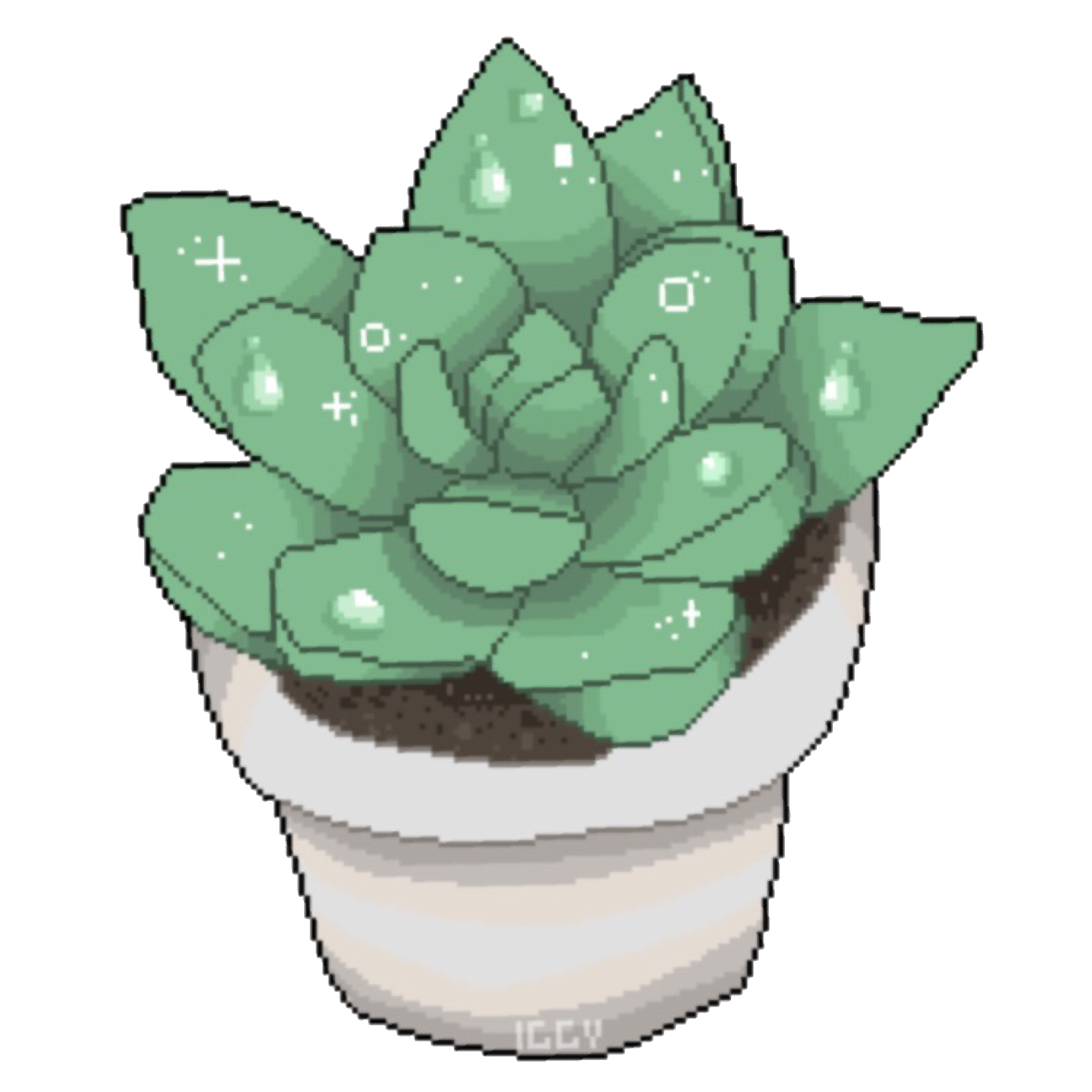Günther Unlustig 🍄
Peter Lustig’s unlustiger verschollener Sohn mit weirden Interessen und Gadsen.
🇩🇪 DE/EN 🇬🇧
<Explaination for anyone not knowing obscure German media>
Peter Lustig used to be the moderator in an old German kids science and nature series called “Löwenzahn” (Dandelion) who shaped our generation.
He also shaped my childhood, and I want to honour him.
My real name also isn’t “Günther”, it’s just a reference to “Olaf, Olaf, Olaf, Günther” from Spongebob: The Movie, because I wanted it to sound like a real name and it makes conversations easier.
- 163 Posts
- 52 Comments

 0·5 days ago
0·5 days agoincreasing the nutrient concentration
Be careful. A nutrient burn is way more harmful than a deficiency.
It’s one of many plants that people say “do not like wet soil,”
Water isn’t the problem, it’s the anaerobic conditions that lead to root rot
Are all of those pictures of your plants really all hydro?
Yeah, the only exception is my one Drosera, which lives in the peat mix I bought it in (can’t survive in most other media) and a few of my balcony plants, mainly my blackberry (perennial) and some pollinator flower mixes that live as weeds.
All other ones, houseplants (including calatheas and some carnivorous plants!) and balcony crops (cannabis, melons, chilli, etc.) are in hydro.
Here, for example, my Tradescantia (because it was a main subject of your post) and Nepenthes




 0·5 days ago
0·5 days agoThe high growth isn’t particularly a pro of DWC - it’s one of hydro in general.
Yeah, I believe my plants (both houseplants and balcony crops) are growing crazy fast, but I don’t know if it’s due to hydro, or just the all in all great conditions in general, like lots of light.
I “sadly” don’t have any plants in soil anymore, so I can’t compare it. But science confirms it too 👍

 0·5 days ago
0·5 days agoYou don’t need to replace the nutrient solution that regularly. Low maintenance is one of the main upsides of hydro.
I flush my pots once a month, sometimes even less often. For that, I just “swoosh” the pot around in a circular motion, and then discard the liquid.
You do this to “reset” the chemical makeup, so you don’t get nutrient lockout from an overabundance of one or the other salts or risk over- or underfertilizing.All the oxygen is supplied through the very big surface and air flow between the LECA balls, because you never fill the pot to more than 1/3 with nutrient solution.
If you wanna know more, just ask, I have over 100 houseplants in hydro and my balcony too :)
Btw, aquarium fertiliser is super expensive for how concentrated it is. I think you can also use half strength orchid fertiliser for the start, or get a “proper” hydro fertilizer if you have a few more plants.
My top recommendation is Masterblend, because it’s so cheap and works very well in my experience.

 0·6 days ago
0·6 days agoI’ve never had any problems with LECA, neither pH drifts nor ion leaching.
I use it for about 100 houseplants and my whole balcony, and I routinely check my EC and pH. Never noticed anything.
Still, thanks for the information! :)

 0·6 days ago
0·6 days agoFor mushrooms I use champignouf.com, which works quite well too. It only works for macroscopic ones and their fruiting bodies of course.

 0·10 days ago
0·10 days agoDo you know how the mechanism works?
Does it work in reverse too? If I fill them with nutrient solution, will they drink it up too?
Is my humidity too low, so the liquid they produce themselfes evaporates?
How high should the level be?
And is the filling process triggered by something?

 0·28 days ago
0·28 days agoSoil being constantly wet is exactly the conditions anaerobic bacteria need to rot everything thats submerged.
The solution is pretty obvious: don’t put soil direct under water.
There are many possible ways to achieve that:
- Add a drainage layer made out of LECA, pumice, or whatever inert material you can get. Then, add a polyester cloth or whatever synthetic fabric you can get, and sandwitch it between, and then add your soil. This prevents it from washing out. LECA and similar substrates can also wick water, but don’t get soaked and can’t rot.
- Or, you can use a polyester cloth or a proper self watering wick and put them in the holes, or fill them completely with it. They can wick way stronger, but shouldn’t be submerged completely, because then the soil gets too wet again. Or,
- Ignore the self watering capabilities and just water regularly, but use it sparingly, e.g. when you go out of town for a week, and then let it dry again
- Or, don’t use soil, and visit !hydroponics@slrpnk.net, where we use different substrates and techniques and also make use of those self watering pots. I use something very similar, but with mineralic substrates (I personally love LECA), where self watering works exactly like that, and the media can be reused indefinitely, without soil borne pests and much more!
Whoops, I thought you meant these tiny black spots.
Yeah, definitely scale bugs. You can get rid of them using insecticides.I can recommend you “Spruzid” made by Neudorff. You can find it pretty much everywhere in local garden or hardware stores, like Dehner, Obi, etc.
I like it because it’s by far not as harmful as other (synthetic) pesticides, especially for pets. It’s even fine to use it on veggies.You can speay your phalaenopsis in it until it’s completely soaked. Repeat that after a few weeks.
Often, pests are just a symptom of an unhealthy plant, so maybe fix the underlying issue first, like nutritional deficiencies or insufficient light.
I pretty much never have to fight pests with my houseplants, and even if I get a contaminated one, they somehow don’t spread and just disappear.
I use Sansi grow lights. They fit into standard E27 bulbs, are very efficient and have a bright natural light.
Be aware, they can be really strong! Some houseplants don’t tolerate much light and can even bleach out if too close to the bulb
Can you share a picture with higher resolution?
Are they mainly located in the substrate? Because those could also be springtails, which are harmless, but I can’t see it from the one picture alone.
It definitely needs more light. Those blurple lights are more gimmicky than useful. You can see that by the internodial elongation.
Then, cut the longest stem to the height of the other ones, which is about the level of the white ball thing. Again, more light, or they will seek out more by themselves and grow very weak and thin.
Optionally, you can now bend the other ones down temporarily with a wire, called Low-Stress-Training, which will send out more side branches.
https://dutch-passion.blog/lst-cannabis-low-stress-training-for-better-yields/
Remove the very lowest ones, so it looks more like a “tree”.
The adhesive spray is actually quite a bit different. Mainly, it doesn’t dry as fast as regular superglue, because there’s a slower polymerizing agent in there. This hardening is an exothermic reaction, and gets hot. The other one is better skin compatible.

 0·2 months ago
0·2 months agoThat would probably have not much effect. Citric acid is super rapidly decomposed by microorganisms, and the sugar in it would make my ants go crazy

 0·2 months ago
0·2 months agoOut of curiosity. I want to see how decomposed and compacted the soil is in particular, because I don’t know if it can be considered “spent” someday.

 0·2 months ago
0·2 months agoI’m already collecting rainwater, but that doesn’t even suffice for my hydro stuff, which has way lower water demands.
Also, I have a reverse osmosis filter, which creates almost 10 parts tap water for 1 part pure water, and I use the “waste” water for watering my soil plants

 0·2 months ago
0·2 months agoI’m currently joining my local gardening club.
It’s a nice community of mainly elderly women, who practice organic gardening, have orchards and more, even a small community cabin!
I will teach them about hydroponics and mushroom cultivation soon, and I’m exited what they can teach me!

 0·2 months ago
0·2 months agoI don’t wanna have that stuff in my soil tbh. Aren’t there any organic ways to acidify it in the long term without adding inorganic stuff?

 0·2 months ago
0·2 months agoI really love these update posts, thank you a lot!
The PR/ communication from the KDE team is absolutely great, and I can’t wait til the new stuff will arrive on Fedora!
KDE is getting even better and better each update, it’s amazing! Thank you for your hard work! 💚









They’re growing in a soil-less media and receive hydroponic fertilizer. The technique is called “semi-hydro”, which is a passive way of growing plants.